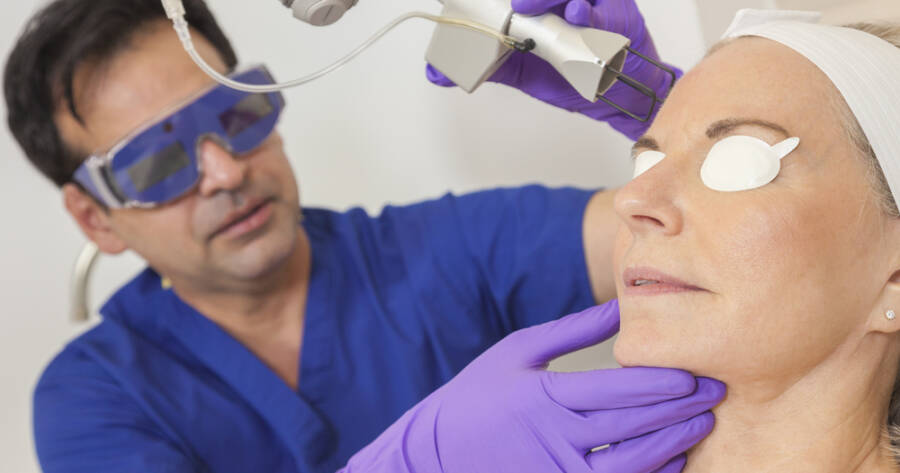Laser skin rejuvenation offers a non-invasive solution for enhancing skin texture and tone. By utilizing advanced light energy technologies, this method targets specific skin concerns such as wrinkles, pigmentation, and scars. Various laser types, including ablative, non-ablative, and fractional options, cater to individual needs, promising tailored results while minimizing recovery time.
Introduction to Laser Skin Rejuvenation
Laser skin rejuvenation has become an increasingly popular option for individuals looking to improve the appearance of their skin without invasive surgical procedures. This technique leverages the power of light energy to target specific tissues, offering a tailored approach to enhance the skin’s texture, tone, and overall appearance.
Understanding the different types of facial lasers can help you make informed decisions about which treatment is best suited for your skin concerns and aesthetic goals.
Types of Laser Skin Treatments
Laser treatments can be broadly categorized into ablative, non-ablative, and fractional therapies. Ablative lasers, such as CO2 and Erbium YAG, are potent tools for deep skin resurfacing. They work by removing outer layers of skin to treat significant wrinkles and scars, though they demand a longer recovery period. In contrast, non-ablative lasers, like Nd and Diode lasers, target deeper skin layers to stimulate collagen production, offering rejuvenation with minimal downtime or tissue damage.
Fractional lasers, such as Fractional CO2 and Erbium, lie between these two categories. They apply the laser energy to a fraction of the skin area, which promotes quicker healing and is ideal for treating scars and performing skin resurfacing. These fractional techniques are advantageous for reducing recovery time while still delivering effective results for skin imperfections such as acne scars and fine lines.
Specific Laser Techniques and Their Applications
Several specific laser treatments offer targeted solutions for particular skin concerns. For instance, the Q-switched and pulsed dye lasers excel in treating pigmented areas and reducing vascular conditions like rosacea and spider veins. These lasers are capable of focusing on the designated problem areas without harming surrounding skin due to their precision.
Moreover, phototherapy alternatives, including Intense Pulse Light (IPL) and LED therapies, employ broader-spectrum or specific wavelength light to effectively address pigmentation issues, acne, and signs of aging, all the while maintaining minimal recovery time. Such treatments are particularly beneficial for those seeking non-invasive options with ease of recovery.
Considerations and Candidacy for Laser Skin Rejuvenation
Determining candidacy for laser skin rejuvenation is crucial to its effectiveness and safety. This procedure is not universally suitable, as individuals with certain conditions such as active acne, very dark skin tones, or excessive sagging skin may not be ideal candidates.
Additionally, potential candidates should consult with a dermatologist to tailor treatments to their specific skin type and concerns. This consultation can guide the selection of the most appropriate laser modality, ranging from light to deep treatments.
Post-Treatment Care and Maintenance
Proper post-treatment care is imperative for achieving optimal results from laser skin rejuvenation. This includes cleansing the treated areas, avoiding sun exposure, and applying recommended ointments to support healing and prevent scars.
Patients should anticipate some degree of redness and swelling post-procedure, which should dissipate over time. The longevity of the results can vary, but skin improvements can be visible immediately and enhance over a year with continued care. Daily sunscreen use and possible subsequent treatments can maintain these results.
Learn More About Laser Skin Rejuvenation
Understanding the variety of treatments and technologies available for laser skin rejuvenation empowers individuals to make educated choices that align with their personal skin goals. Whether seeking to address wrinkles, pigmentation, or scars, these advanced technologies provide diverse solutions.
Consulting with qualified professionals can ensure a safe and effective experience, yielding youthful and radiant skin results. With the ongoing advancements in laser technologies, today’s options offer promising results with fewer risks and quicker recovery times than traditional methods. Investing time to learn about these options can lead to substantial enhancements in skin health and aesthetics.
Sources
Comprehensive Guide on Laser Therapies

